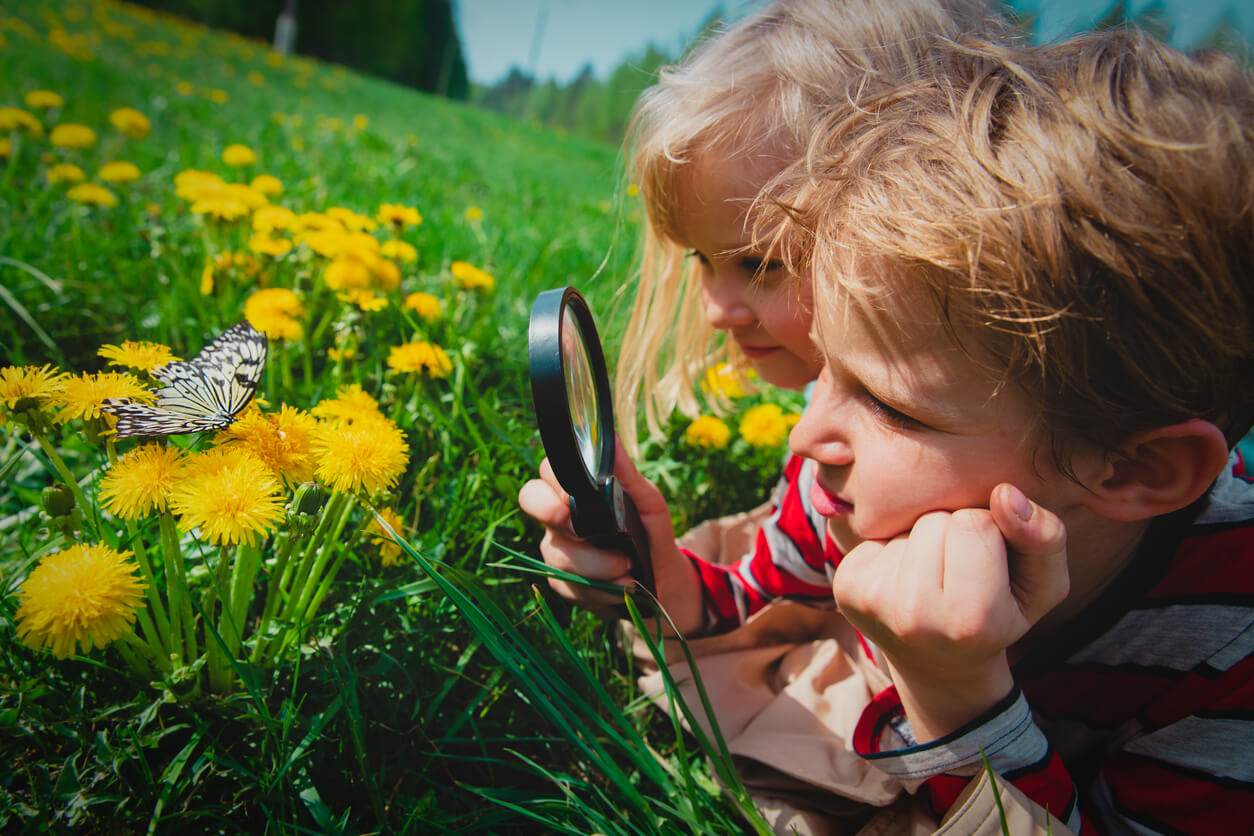5 Alternatives to Homework for Children on Vacation


Written and verified by the psychologist Maria Fátima Seppi Vinuales
Vacations are a perfect time to take a break and enjoy other activities without the rigor of routine. However, this doesn’t mean that it’s impossible to continue promoting learning and curiosity in children. On the contrary, this period enables other ways of going about it it, especially through gamification, where knowledge and play go hand in hand. Here are 5 alternatives to homework for children on vacation.
You may be interested in: Children Are Happier While on Vacation
5 alternatives to homework for children on vacation
Whether it’s summer vacation, the Christmas season, or spring break, it’s very important to set a different pace during vacation time compared to the routine your children have during the rest of the year. It’s a time to allow for rest and less regulated ways of getting in touch with the things that interest us. Let’s look at some of these alternatives to homework for children on vacation.
1. Organize outdoor activities
Depending on the weather, you can do activities such as hiking, picnics, camping, biking, ice skating, sledding, etc. Also, you can stimulate or accompany your children in their academic interests, but in a different way. For example, for a child who’s interested in insects, you can suggest an outdoor excursion to discover, investigate, and learn about them. In doing so, you offer them a hands-on experience, which is very enriching and replaces the visualization of images in a book, which is more appropriate for the school setting.

2. Discover their interests
A good option is to ask your children the following question: What do you want to do today? In this way, you not only provide a space for dialogue and discover your children’s interests, but you also help them to connect with their desires and exercise their autonomy. Sometimes, interesting facts emerge. For example, they may want to sleep in or have breakfast in bed one day.
3. Plan those activities you’re always putting off for “some other day”
When kids are in school, we may not give into looking in the back of the closet for a particular board game because it’s too long or because it takes too long to tidy up afterward. We tend to discard puzzles with a lot of pieces because there’s nowhere to keep them until we finish putting them together. For these cases, vacation time spent at home is a perfect occasion to put those ideas into practice.
4. Reinforce what’s been learned from everyday life
When vacations are long, such as during the summer, it’s possible to create moments to reinforce certain concepts or to take another look at what your child has learned. However, this shouldn’t be done as a primary activity, but in parallel to the main activity. For example, you can exercise memory, organization, and certain mathematical operations by asking your children to help you make a list and go grocery shopping. At the same time, reading and comprehension can be strengthened by sharing an evening story with them.
5. Prepare a list of ideas
Each member of the family can choose an activity and agree on which day to do it. The key here is collaboration, brainstorming that brings diversity, and also the alternation between a schedule of plans and the time to do nothing.
Besides this series of alternatives to homework in summer, we mustn’t make the mistake of trying to replace one agenda with another. We must avoid transferring to children the discomfort generated by the uncertainty of not knowing what to do with them. In this regard, there’s no need to complete a notebook full of activities on vacation. It’s also a matter of having free time, allowing children to connect with the challenge of adapting, deciding how they want to entertain themselves, and even getting bored. Boredom is also a trigger for kids to create and think about how to have fun.
You may be interested in:5 Ideas for Coping with the End of Summer Vacation

Alternatives to homework promote other forms of learning
As we pointed out, vacations can be an opportunity to reinforce knowledge or provide answers to children’s concerns. However, the meaning of each time shouldn’t be confused. Vacations invite us to move at our own pace and to move as we please. Meanwhile, during the rest of the year, we respect schedules, comply with routines, and do our homework.
At the same time, we must also broaden our own conception of learning. For example, swimming, cycling, or cooking are also activities that put our brains to work and allow us to acquire other skills. Learning isn’t reduced only to time spent at school or doing homework, but quite the opposite. Any experience can be a potential learning experience.
Don’t forget about leisure time
It’s important that children learn from an early age that leisure time is also productive. When we stop and relax, we can get to know ourselves and give rise to our creativity, which is often silenced or covered up under a list of obligations to fulfill. If we don’t give children leisure time, we may lead them to think that the only time that’s worthwhile that spent doing certain things (such as studying or working), which results in guilt when resting or having fun. Perhaps we adults need to change our mindset, as the society we live in today tells us that success and value are measured by the number of hours we work.
Vacations are a perfect time to take a break and enjoy other activities without the rigor of routine. However, this doesn’t mean that it’s impossible to continue promoting learning and curiosity in children. On the contrary, this period enables other ways of going about it it, especially through gamification, where knowledge and play go hand in hand. Here are 5 alternatives to homework for children on vacation.
You may be interested in: Children Are Happier While on Vacation
5 alternatives to homework for children on vacation
Whether it’s summer vacation, the Christmas season, or spring break, it’s very important to set a different pace during vacation time compared to the routine your children have during the rest of the year. It’s a time to allow for rest and less regulated ways of getting in touch with the things that interest us. Let’s look at some of these alternatives to homework for children on vacation.
1. Organize outdoor activities
Depending on the weather, you can do activities such as hiking, picnics, camping, biking, ice skating, sledding, etc. Also, you can stimulate or accompany your children in their academic interests, but in a different way. For example, for a child who’s interested in insects, you can suggest an outdoor excursion to discover, investigate, and learn about them. In doing so, you offer them a hands-on experience, which is very enriching and replaces the visualization of images in a book, which is more appropriate for the school setting.

2. Discover their interests
A good option is to ask your children the following question: What do you want to do today? In this way, you not only provide a space for dialogue and discover your children’s interests, but you also help them to connect with their desires and exercise their autonomy. Sometimes, interesting facts emerge. For example, they may want to sleep in or have breakfast in bed one day.
3. Plan those activities you’re always putting off for “some other day”
When kids are in school, we may not give into looking in the back of the closet for a particular board game because it’s too long or because it takes too long to tidy up afterward. We tend to discard puzzles with a lot of pieces because there’s nowhere to keep them until we finish putting them together. For these cases, vacation time spent at home is a perfect occasion to put those ideas into practice.
4. Reinforce what’s been learned from everyday life
When vacations are long, such as during the summer, it’s possible to create moments to reinforce certain concepts or to take another look at what your child has learned. However, this shouldn’t be done as a primary activity, but in parallel to the main activity. For example, you can exercise memory, organization, and certain mathematical operations by asking your children to help you make a list and go grocery shopping. At the same time, reading and comprehension can be strengthened by sharing an evening story with them.
5. Prepare a list of ideas
Each member of the family can choose an activity and agree on which day to do it. The key here is collaboration, brainstorming that brings diversity, and also the alternation between a schedule of plans and the time to do nothing.
Besides this series of alternatives to homework in summer, we mustn’t make the mistake of trying to replace one agenda with another. We must avoid transferring to children the discomfort generated by the uncertainty of not knowing what to do with them. In this regard, there’s no need to complete a notebook full of activities on vacation. It’s also a matter of having free time, allowing children to connect with the challenge of adapting, deciding how they want to entertain themselves, and even getting bored. Boredom is also a trigger for kids to create and think about how to have fun.
You may be interested in:5 Ideas for Coping with the End of Summer Vacation

Alternatives to homework promote other forms of learning
As we pointed out, vacations can be an opportunity to reinforce knowledge or provide answers to children’s concerns. However, the meaning of each time shouldn’t be confused. Vacations invite us to move at our own pace and to move as we please. Meanwhile, during the rest of the year, we respect schedules, comply with routines, and do our homework.
At the same time, we must also broaden our own conception of learning. For example, swimming, cycling, or cooking are also activities that put our brains to work and allow us to acquire other skills. Learning isn’t reduced only to time spent at school or doing homework, but quite the opposite. Any experience can be a potential learning experience.
Don’t forget about leisure time
It’s important that children learn from an early age that leisure time is also productive. When we stop and relax, we can get to know ourselves and give rise to our creativity, which is often silenced or covered up under a list of obligations to fulfill. If we don’t give children leisure time, we may lead them to think that the only time that’s worthwhile that spent doing certain things (such as studying or working), which results in guilt when resting or having fun. Perhaps we adults need to change our mindset, as the society we live in today tells us that success and value are measured by the number of hours we work.
All cited sources were thoroughly reviewed by our team to ensure their quality, reliability, currency, and validity. The bibliography of this article was considered reliable and of academic or scientific accuracy.
- Luisa Arroba, María, Manzarbeitia, Paloma (2009).El tiempo libre de los niños. Anales de Pediatría Continuada. Vol. 7. Núm. 6. pp 373-379. DOI: 10.1016/S1696-2818(09)73210-X
- Sanz Cano, Pedro Juan. (2019). El juego divierte, forma, socializa y cura. Pediatría Atención Primaria, 21(83), 307-312. Epub 09 de diciembre de 2019. Recuperado en 08 de agosto de 2022, de http://scielo.isciii.es/scielo.php?script=sci_arttext&pid=S1139-76322019000300022&lng=es&tlng=es.
- Monge, María de los Ángeles, & Meneses, Maureen (2001). El juego en los niños: enfoque teórico. Revista Educación, 25(2),113-124.[fecha de Consulta 7 de Agosto de 2022]. ISSN: 0379-7082. Disponible en: https://www.redalyc.org/articulo.oa?id=44025210
This text is provided for informational purposes only and does not replace consultation with a professional. If in doubt, consult your specialist.








